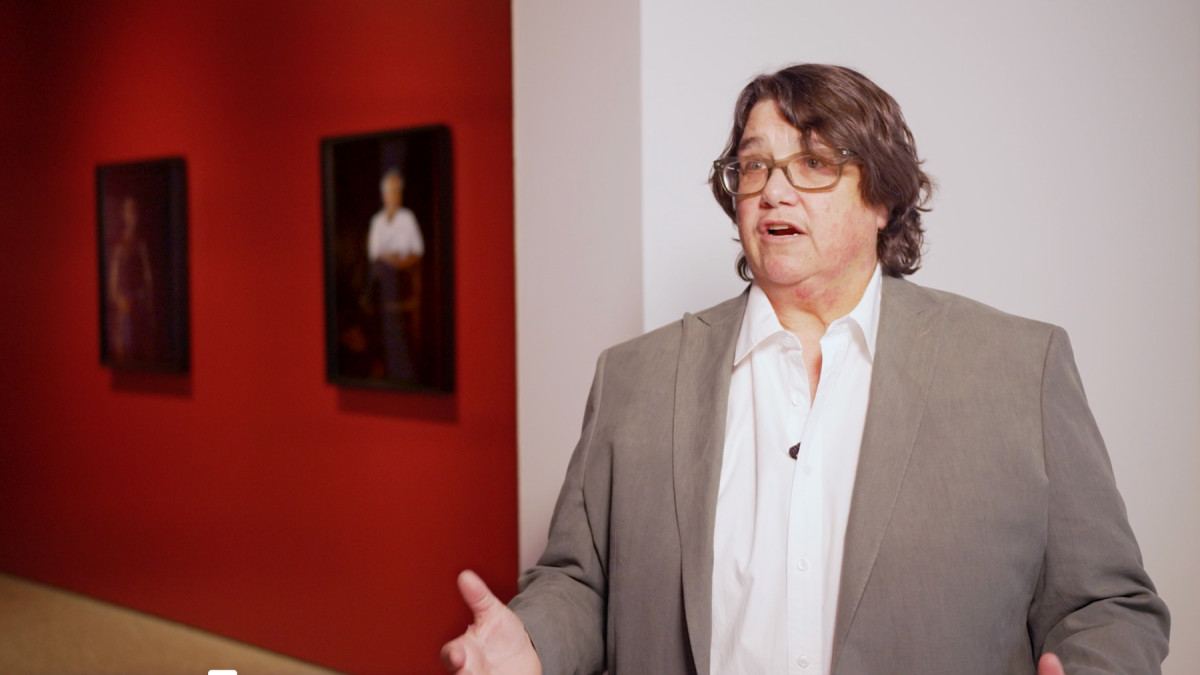Untitled (Miller House, #02)
2002 - Photography (Photography)
Luisa Lambri
Lambri’s careful framing in Untitled (Miller House, #02) redefines our understanding of this iconic mid-century modernist building located in Palm Springs, California. Commissioned by industrialist J. Irwin Miller and his wife Xenia Simons Miller, and built by Richard Neutra in 1937, the Miller house’s open and flowing layout expands upon modernist architectural traditions. It features a flat roof, stone and glass walls, with rooms configured beneath a grid pattern of skylights and supporting cruciform steel columns. Rather than a distanced view of the overall structure—favored by modernist architectural photographers like Julius Shulman—Lambri instead works from the inside, focusing on Saarinen’s windows and the soft, even light. The resulting image is a poetic abstraction, an architectural photograph that yields not only a picture of a building, but suggests what it actually feels like to be in that architectural space.
Rudolph Schindler’s designs, part of a practice he called “Space Architecture,” marry interior with exterior and space with light. The architect’s longtime studio and residence, which he built in Los Angeles in 1922, exemplifies this philosophy, and has since become an influential part of the modernist architectural canon. In Untitled (Schindler House #01) (2007), Luisa Lambri describes Schindler’s studio by capturing its aftereffects—the play of light and shadow cast through branches onto a surface. The photograph is an ethereal portrait of Schindler’s work and ethos, evoking the building without actually depicting its concrete slabs and untreated wood.
Colors:
Other related works, blended automatically

© » KADIST
Luisa Lambri
2007Rudolph Schindler’s designs, part of a practice he called “Space Architecture,” marry interior with exterior and space with light...

© » KADIST
Tina Modotti
1930The Italian photographer Tina Modotti is known for her documentation of the mural movement in Mexico...

© » KADIST
Tina Modotti
1927Modotti’s Diego Rivera Mural: Billionaires Club; Ministry of Education, Mexico D...

© » KADIST
Sharon Lockhart
2008Lockhart’s film Lunch Break investigates the present state of American labor through a close look at the everyday life of the workers at the Bath Iron Works shipyard—a private sector of the U...

© » KADIST
Mario Ybarra Jr.
2009Ammo Bunker (2009) is a multipart installation that includes large-scale wall prints and an architectural model...

© » KADIST
Walead Beshty
2011Constructed out of metal or glass to mirror the size of FedEx shipping boxes, and to fit securely inside, Walead Beshty’s FedEx works are then shipped, accruing cracks, chips, scrapes, and bruises along the way to their destination...

© » KADIST
Bruce Conner
1995Bruce Conner is best known for his experimental films, but throughout his career he also worked with pen, ink, and paper to create drawings ranging from psychedelic patterns to repetitious inkblot compositions...

© » KADIST
Carlos Garaicoa
2010From the series the Old and the New (XI) by Carlos Garaicoa belongs to the series Lo viejo y lo nuevo / Das Alte und das Neue (The Old and the New) which was first exhibited in 2010 at Barbara Gross Gallery in Germany...

© » ROYAL ACADEMY
Catherine Opie
Video: Catherine Opie on photographing leading British artists | Blog | Royal Academy of Arts Catherine Opie in the RA Collection Gallery Video: Catherine Opie on photographing leading British artists Read more Become a Friend Video: Catherine Opie on photographing leading British artists Published 8 September 2023 Catherine Opie discusses her portraits of David Hockney, Anish Kapoor, Gillian Wearing, Isaac Julien and Lynette Yiadom-Boakye, featured in our free display in the Collection Gallery...

© » KADIST
Wallace Berman
1969While Untitled (Shuffle) presents the same formal characteristics as the rest of Berman’s verifax collages, this constellation of specific images inside the radio’s frames—the Star of David, Hebrew characters, biblical animals—have Jewish symbolism and attest to the artist’s lasting obsession with the kabala...

© » KADIST
Wolfgang Tillmans
2017Wolfgang Tillmans initiated the ongoing series Faltenwurf in 1989, representing compositions of unused clothing, with special attention paid to the ways in which they drape and fold...

© » KADIST
Lisa Oppenheim
2003The Damaged series by Lisa Oppenheim takes a series of selected photographs from the Chicago Daily News (1902 – 1933) as its source material...

© » KADIST
James Welling
2006Welling employs simple materials like crumpled aluminum foil, wrinkled fabric and pastry dough and directly exposes them as photograms, playing with the image in the process of revealing it...

© » KADIST
Walead Beshty
2012Constructed out of metal or glass to mirror the size of FedEx shipping boxes, and to fit securely inside, Walead Beshty’s FedEx works are then shipped, accruing cracks, chips, scrapes, and bruises along the way to their destination...

© » KADIST
Yee I-Lann
20207-headed Lalandau Hat by Yee I-Lann is an intricately woven sculpture evoking the ceremonial headdress worn by Murut men in Borneo...

© » KADIST
Lu Chunsheng
2004A mesmerizing experience of a vaguely familiar yet remote world, History of Chemistry I follows a group of men as they wander from somewhere beyond the edge of the sea through a vast landscape to an abandoned steel factory...

© » KADIST
Paul McCarthy
2010To make Mickey Mouse (2010), Paul McCarthy altered a found photograph—not of the iconic cartoon, but of a man costumed as Mickey...



